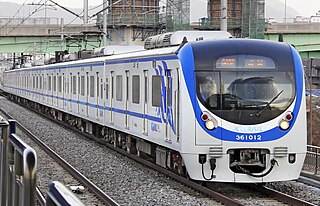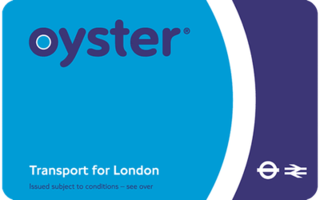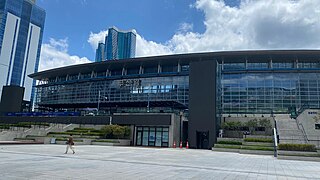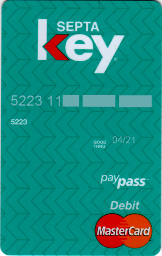This article needs additional citations for verification .(July 2019) |
KTX Family Card is the loyalty program and membership card of Korail. This card is issued by Korail Networks, subsidiary of Korail.
This article needs additional citations for verification .(July 2019) |
KTX Family Card is the loyalty program and membership card of Korail. This card is issued by Korail Networks, subsidiary of Korail.
In the 1980s, the National Railroad Administration started to issue Railroad Membership Cards. This membership card only had a 10-digit membership number on it, this type of card is widely used until 1998. In 1998, quick-ticket machines and a new membership card with a magnetic strip were introduced. Although the quick-ticket machine had many benefits, the machine and new card were not widely used. The current version of KTX Family Card with IC chip (Smart card) was introduced in 2004.[ citation needed ]

The Korea Railroad Corporation is the national railway operator in South Korea. It is branded as KORAIL (코레일) and changed its official Korean name in November 2019. Currently, KORAIL is a public corporation, managed by Ministry of Land, Infrastructure and Transportation.

The Gyeongchun Line is a regional rail line between Seoul and Chuncheon, South Korea, operated by Korail. Its name is derived from Gyeong and Chuncheon. It was completely reconstructed in the 2000s. Service on it has operated between Sangbong station on the Jungang Line in eastern Seoul and Chuncheon station, as part of the Seoul Metropolitan Subway system, since December 21, 2010. A class of regional rail service named ITX-Cheongchun began operations on February 28, 2012, linking Chuncheon to Cheongnyangni and Yongsan Stations.

The Oyster card is a payment method for public transport in London, England, United Kingdom. A standard Oyster card is a blue credit-card-sized stored-value contactless smart card. It is promoted by Transport for London (TfL) and can be used on as part of London's integrated transport network on travel modes including London Buses, London Underground, the Docklands Light Railway (DLR), London Overground, Tramlink, some river boat services, and most National Rail services within the London fare zones. Since its introduction in June 2003, more than 86 million cards have been used.

Korea Train eXpress (Korean: 한국고속철도), often known as KTX, is South Korea's high-speed rail system, operated by Korail. Construction began on the high-speed line from Seoul to Busan in 1992. KTX services were launched on April 1, 2004.

T-money is a rechargeable series of smart cards and other "smart" devices used for paying transportation fares in South Korea. T-money can also be used in lieu of cash or credit cards in some convenience stores and other businesses. The T-money System has been implemented and is being operated by T-money Co., Ltd of which 34.4% owned by Seoul Special City Government, 31.85% owned by LG CNS, and 15.73% owned by Credit Card Union.

Busan station (Korean: 부산역) is a train station in Busan, South Korea. It is the southern terminus of the Gyeongbu Line & the Gyeongbu high-speed railway, the most important railway lines in the country, which links Busan with Seoul in around two and a half hours on KTX, Korea's high-speed rail train. There are also cheaper, slower rail alternatives to seoul, including the "Mugungwha" Train, which takes over four hours. Essentially all trains to Seoul stop in a few settlements between the two cities. It is also an underground station on Busan Metro Line 1 between Jungang and Choryang stations. The station is centrally located in the Choryang-dong (neighbourhood) of Dong-gu (ward) in Busan.

AREX is a South Korean airport rail link and commuter rail line that links Incheon International Airport with Seoul Station via Gimpo International Airport.

Korea National Railway is a railroad construction and management company in South Korea formed by the merger of KNR Construction Headquarters and Korean Express Railroad Construction Corporation. Its main clients are Korail. It is a subsidiary of the Ministry of Land, Infrastructure and Transport.

The Network Railcard is a discount card introduced in 1986 by British Rail, upon the creation of their Network SouthEast sector in parts of Southern England.

Rail transport in South Korea is a part of the transport network in South Korea and an important mode of the conveyance of people and goods, though railways play a secondary role compared to the road network. The network consists of 4,285 km (2,663 mi) of standard-gauge lines connecting all major cities with the exception of Jeju City on Jeju Island, which does not have railways; of the network, 2,790 km (1,730 mi) are double-tracked and 3,187 km (1,980 mi) are electrified. In 2018, rails carried 11.5 percent of all traffic in South Korea – 134.8 million passengers and 30.9 million tonnes of freight – with roads carrying 88.3 percent.
Seoul, the capital and largest city in South Korea, accounts for only 0.6% of the country's total land area, yet it is home to around 19% of the population. The population density in Seoul demands a great deal of the city's transportation systems, which are regarded by many as among the best and most advanced in the world. Seoul is very well connected by its subway and bus systems, and the city is also very supportive of pedestrian foot travel. In 2006 it won the Sustainable Transport Award.

Gwangmyeong station (Korean: 광명역) is a train station in Gwangmyeong, South Korea. The station was newly built as a stop of national railway operator Korail's KTX high-speed service, 22.0 km (13.7 mi) south of Seoul Station.

The Gyeongbu high-speed railway, also known as Gyeongbu HSR, is South Korea's first high-speed rail line from Seoul to Busan. KTX high-speed trains operate three sections of the line: on 1 April 2004, the first between a junction near Geumcheon-gu Office station, Seoul and a junction at Daejeonjochajang station north of Daejeon, and a second between a junction at Okcheon station, southeast of Daejeon, and a junction near Jicheon station, north of Daegu entered service; then on 1 November 2010, the third section, between a junction west of Daegu and Busan became operational. The missing gaps across the urban areas of Daejeon and Daegu were in construction for an expected opening in 2014, separate tracks into Seoul Station were also planned. The temporary ends of the three sections were connected to the parallel conventional Gyeongbu Line by tracks that will serve as interconnector branches upon the completion of the entire line. On 1 August 2015, construction on urban areas of Daejeon and Daegu were completed; all the sections of HSR line were connected.

The Honam high-speed railway, also known as Honam HSR, is a high-speed rail between Osong and Mokpo in South Korea. The line is a part of Korail's Korea Train Express (KTX) system, accelerating Seoul–Mokpo and Seoul–Gwangju KTX high-speed services which currently use the existing conventional Honam Line. On April 1, 2015, the line was inaugurated by the South Korean President Park Geun-hye with the attendance of 1200 invited guests and members of the public at Gwangju Songjeong Station in Gwangju, the line's terminus. The line diverges from Osong station on the Gyeongbu high-speed railway, and stops at Gongju, Iksan, Jeongeup Stations. Journey times between Seoul and Gwangju has been cut from 2 h 40 min to just 90 min, making daily commuting possible. The Honam HSR is intended to bring business, and economic opportunities to the province of Jeollanam-do, which has seen slower development than other parts of South Korea. The line has been open to the public since April 2, 2015 for revenue service.
BahnCard is a discount subscription programme offered by Deutsche Bahn (DB), the German national railway company. Unlike airline loyalty programs, but similarly to the UK Railcard, the BahnCard entitles the passenger to a discount price and must be purchased prior to travel. The BahnCard is offered in a non-business and a business version called BahnCard Business. Non-business BahnCard contracts are automatically renewed each year, unless they are cancelled with sufficient notice. Three variants of BahnCard are sold by Deutsche Bahn: The BahnCard 25, the BahnCard 50, and the BahnCard 100. The first two variants allow passengers to get 25% and 50% discount respectively on standard long-distance rail fares, while the Mobility BahnCard 100 is a type of annual ticket that allows free unlimited travel on most of the German railway network for a fixed price. The (non-business) BahnCard 25/50 are valid for one year and can only be purchased by subscription. If they are not canceled no later than six weeks before the expiry date, their term is automatically extended by another year. BahnCard Business 25/50 are also valid for one year but require no cancellation. Unlike the personal BahnCard, BahnCard Business can be combined with the discount that is granted to large-volume business customers.

The KTX-Sancheon is a South Korean high-speed train built by Hyundai Rotem in the second half of the 2000s and operated by Korail since March 2010. With a top speed of 305 km/h (189.5 mph), the KTX-Sancheon is the second commercial high-speed train operated in South Korea and the first domestic high-speed train that is designed and developed in South Korea.

The KTX-I, also known as the TGV-K or Korail Class 100000, is a South Korean high speed train class based on the French TGV Réseau. The 20-car formation of the trainsets without restaurant car is optimized for high capacity. The 46 trainsets were built partly in France and partly in South Korea in the framework of a technology transfer agreement, which was the basis for further domestic high-speed train development in South Korea.
The Korea Rail Pass, also commonly called the KR Pass, is a rail pass offered by Korail, the national railway operator of South Korea. The pass is offered exclusively to foreign visitors and is valid for most of the rail lines operated by Korail in the designated period, including KTX, the high-speed railway in South Korea. However, the pass is not valid for subways and tourist trains, even when they are also operated by Korail.

The Donghae Line is a railway line connecting Busanjin station to Yeongdeok in South Korea. The literal meaning of its name, the "East Sea Line," reflects its position along the nation's East coast. It merged with the Donghae Nambu Line on December 30, 2016, and will merge with the Donghae Bukbu Line.

The SEPTA Key card is a smart card that is used for automated fare collection on the SEPTA public transportation network in the Philadelphia metropolitan area. It can be used throughout SEPTA's transit system, including buses and SEPTA Metro, and on Regional Rail.